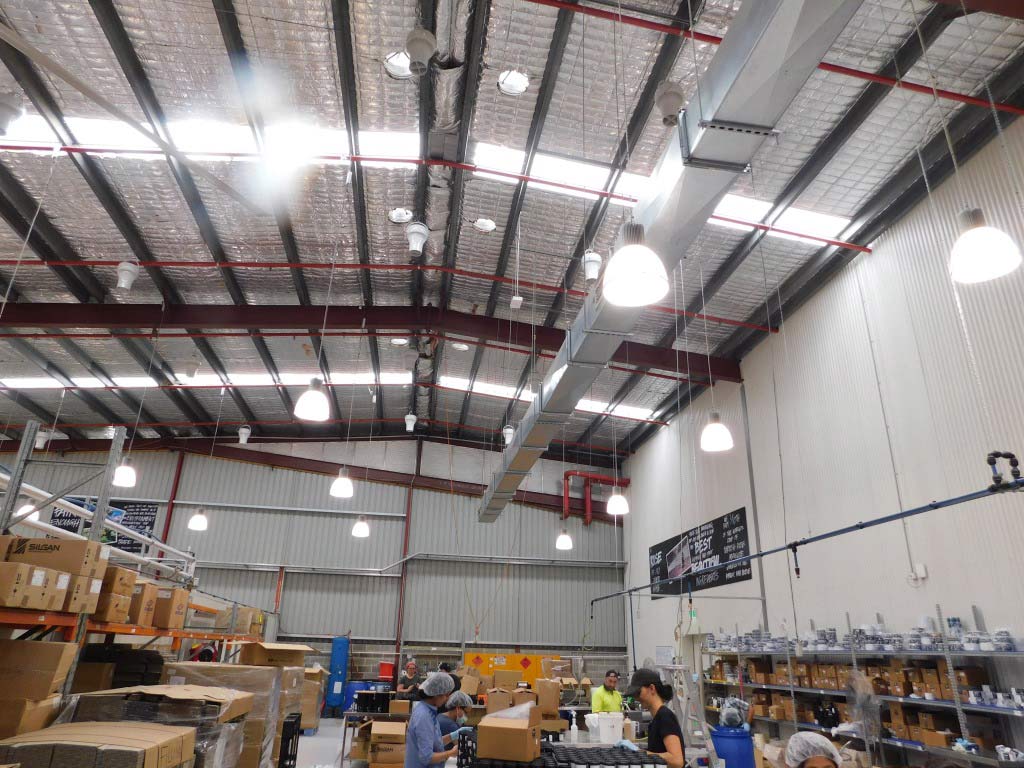Why is my partner comfortable when I’m not??
Find out about the thermal comfort dilemma here.
‘Turn the cooling down, please,’ asks my wife. ‘I’m hot.’
‘Well that’s great for you, but I’m cold,’ I suggest.
‘But we are in the same car, how can you be cold when I’m hot?’, my wife protests.
And therein, lies the rub.
The subjectivity of thermal comfort makes it almost impossible to have everyone comfortable under the same thermal conditions.
I’m sure most of us have experienced the example noted above, in some form or another.
I often ponder whether this type of conversation was a key driver for cars now having at least two, if not three or even four, variable temperature outlets, so individual comfort levels can be, hopefully, attained for each inhabitant. And if your car has those types of ‘climate control systems’, have a look at what temp your wife or your husband or your children set theirs at. It can easily be three of four degrees C. different to the other person’s setting sitting adjacent, in the same space!
That’s why the scientific research tells us that in any space you will never get more than 80% of the inhabitants experiencing a level of comfort in that space. There will always be 20% uncomfortable. This is known as PPD (Percentage of People Dissatisfied)
And, believe it or not, the scientific evidence shows us that those outcomes of dissatisfaction are found in both air conditioned and non-air-conditioned buildings. They are, surprisingly to some, very close.
Thermal comfort is a much-used term across a range of applications and covers all sorts of experiences and reactions.
And as a science, that has only gained appreciation of the influence it has, (or should have) over building design and operations, in more recent times, there is still a lot of misinformation and ‘lessons to be learned’ around ‘what is thermal comfort?’.
The initial example at the start of this article, of how woman and men often experience different levels of thermal comfort highlights the dilemma facing building designers and engineers.
What do I do to the space to optimise thermal comfort? How do I make everyone comfortable?
Sounds simple!… well it isn’t.
As the awareness around the differing needs for thermal comfort becomes more mainstream in building design, more and more researchers are delving into the difference in comfort requirements due to: –
- Gender differences
- Age differences
- Psychological differences
- Physiological differences
- Expectation
- Activity differences
- Behavioural differences
- Background
- Social demographics
Now we all know that the comfort requirements on a very hot day when playing basketball, for example, are totally different to the comfort criteria needed for an office. Yet for some reason, all air conditioning systems are generally set at 22.5 Degrees C. in Australia. Which, of course, raises even more questions about thermal comfort. Why is it assumed everyone will be comfortable at some magical temperature across all range of activities and building types?
That said, how many of you work in an office environment where there is always someone complaining they are: –
- Too hot
- Too cold
- Too much draught
- ‘My feet are cold’
- ‘This area is too hot over here’
- ‘I’m really cold here at my desk’
- ‘I want more breeze I’m too hot’
It really must drive the poor air conditioning contractor ‘nuts.’
I have undertaken hundreds of presentations around thermal comfort, mainly to attendees in an office environment and I recall just one group of attendees telling me that their office is really comfortable and no one ever complains. At every other presentation, the subject of thermal comfort in office environments brings laughter and finger pointing, as everyone acknowledges it is an annoying and prevalent issue.
And I ask every single group of attendees at my presentations about the level of thermal comfort in their offices.
Some may suggest that single group wasn’t telling me the truth, but even if they were, it is such a small, anomalous number that it could be considered statistically insignificant.
This could be a key reason why one of the more recent and more prevalent of discussions in thermal comfort is around the differences in gender comfort.
That is; do females experience comfort differently to men? If so, why?
Using my own experience, take travelling on a plane. My wife is often freezing on a plane flight and complains of how cold it is, yet I am feeling quite comfortable. And she will often have more clothing on as well.
First of all though, let’s be clear, the way thermal comfort is measured is still in dispute, with more than one methodology available for identifying what is comfortable. Even in today’s scientific world, acceptance of varying measuring and outcome processes is still required. And that’s understandable though, because thermal comfort is so subjective, and such a personal interpretation of a range of conditions, you simply couldn’t design or build a space that kept every user of that precinct, comfortable. Hence, different ways to measure comfort based upon differing research.
As long as we accept that reality, then we can examine some of the available recent research around the thermal comfort topic with a degree of interest.
Wikipedia, for example, offers the following:
‘Studies have found males report discomfort due to rises in temperature much earlier than females.
Males also estimate higher levels of their sensation of discomfort than females.
One recent study tested males and females in the same cotton clothing, performing mental jobs while using a dial vote to report their thermal comfort to the changing temperature. Many times, females will prefer higher temperatures. But while females were more sensitive to temperatures, males tend to be more sensitive to relative-humidity levels’.
Sami Karjalainen, from the VTT Technical Research Centre of Finland, Espoo, Finland has undertaken some of the more recent detailed research around gender differences in thermal comfort.
In 2007, he wrote as an outcome of his research,
…..’The results show significant gender differences in thermal comfort, temperature preference, and use of thermostats. Females are less satisfied with room temperatures than males, prefer higher room temperatures than males, and feel both uncomfortably cold and uncomfortably hot more often than males. (Elsevier Volume 42, Issue 4, April 2007, Pages 1594-1603)
(This research chart  opposite highlights the difference in male and female differences in thermal comfort – https://www.sciencedirect.com/science/article/pii/S2210670714000250#!)
opposite highlights the difference in male and female differences in thermal comfort – https://www.sciencedirect.com/science/article/pii/S2210670714000250#!)
Conversely, research undertaken in China by Zhang et al, 2014, offers the following conclusions’
….’ Both genders were equally satisfied with temperature, although females tended to be more dissatisfied in cool temperatures, and males tended to be more dissatisfied in warm temperatures’.
And research undertaken in sub-tropical China in 2013, 17 different spaces had somewhat different results again.
….Besides, the results show significant gender differences in urban spaces in terms of neutral temperature, preferred temperature and optimum wind speed’.
Research undertaken by Beshir et al in 1981 and Karjalainen in 2007, and summarised in the Nature Climate Change Journal, summarises the gender preferences’ in thermal comfort as follows: –
..’ In general, females prefer a higher room temperature than males in home and office situations, and mean values may differ as much as 3 K (males: 22 ◦C versus females: 25 ◦C; refs 6,7)
So this raises the question, why is ‘one size fits all’ temperature setting used in facilities where both males and females share the space?’
Without going into to detail, these types of differences in response to a range of thermal conditions, invoke queries around;
- What was their expectation around thermal comfort based upon their upbringing, living standards etc?
- Psychologically, what did they grow up with? Hence is that what they only find comfortable now?
- Behaviour wise, what behaviours did they, or could they undertake, to skew these results?
- What age were the respondents?
Early researchers in thermal comfort, such as Ole Fanger, (who instigated a large amount of the initial thermal comfort research in the 1970’s) indicated that the differences between male and female thermal comforts levels were primarily to do with the females usually wearing lighter or less restrictive clothing compared to men.
Later research has, however, indicated that the differences are much more complicated than a clothing type issue. Its only recently in thermal comfort research that the impacts of psychological expectation, physiological and behaviour changes etc, and age, have been considered in thermal comfort research.
For example, consider the ASHRAE thermal comfort survey proforma, used by engineers etc. to undertake a thermal comfort survey using specific and measurable data inputs and offering a measured, standardised and therefore realistic approach to thermal comfort survey outcomes.
In their survey, for example, they ask whether you had had a hot beverage in the hour before taking the survey, or if you had been for any significant exercises in a certain period prior to the survey being undertaken.
This is evidence of the increasing understandings and influences around thermal comfort considerations and its knowledge base.
 One must wonder how many times people express a discomfort with an internal air-conditioned environment yet there is no questioning of what they were doing prior that may have contributed to their discomfort. Or do they live in an air conditioned home . Or did they grow up in a totally different climate etc?
One must wonder how many times people express a discomfort with an internal air-conditioned environment yet there is no questioning of what they were doing prior that may have contributed to their discomfort. Or do they live in an air conditioned home . Or did they grow up in a totally different climate etc?
Expressing a feeling of comfort that is not in the present is also not an effective measure of what is comfortable. That is, people find it difficult to transplant periods of comfort from say an hour ago or a week ago to now. What made them comfortable an hour ago may not make them comfortable now and their perception of what it was that did make them comfortable previously maybe influenced and then skewed by a range of subsequent factors.
It is this dynamism of thermal comfort and its ever-changing subjectivity, which contributes to the difficulty in providing a comfortable space for all.
The message here is around memory of comfort…how accurate it is.
As we look towards improving comfort the value of air movement in summer overheated environments is supported by large amounts of scientific research. And the outcomes apply to both genders and are not heavily influenced by some of the less tangible comfort preconceptions such as conditioning or expectation. When its hot, everyone, male or female, young or old, prefers some air movement to no air movement.
Some very interesting research undertaken in 2010 by Professor Richard de Dear et al, looked at the history of thermal comfort research over the last twenty years to support this requirement for air movement in summer.
To paraphrase their works….
‘…. Collectively these studies emphasize that elevated air speeds not only impact indoor environmental quality in a negative way through draft in cool environments but can also positively enhance thermal acceptability and comfort in warm environments..’. (de Dear et al; 2010)
See what Lush Cosmetics have to say...
….’For natural ventilation in hot and humid climates, higher air speeds may be desirable in order to improve subjects’ thermal comfort. This dispels the notion of draft in hot and humid climates and it is consistent with the broader theory of alliesthesia and the physiological role of pleasure due to air movement increment.’ De Dear et al 2010; (Building and Environment, 45).
In this article, further research indicates the importance of air movement for cooling in non-conditioned spaces and how the subjects of the research requested higher air speeds.
…’ These results suggest that subjects’ acceptance of higher air velocities increased to compensate for elevated temperature and humidity. In summary, air movement can be quite acceptable at speeds well excess of the previous values suggested in the literature and standards’…
De Dear et al, 2010; (Building and Environment, 45)
Now in winter, thermal comfort requirements change.
Air movement can become a draught. And in winter draughts are annoying. ASHRAE asdvises that air movement at below 19 Deg .C is felt as a draught by building inhabitants.
The key to ensuring effective thermal comfort in winter is twofold.
- Ensure the heat is down on the floor where you need it, not sitting up under the roof.
- Move the heat gently around the space creating as a little a draught as possible.
As can be seen the requirements for summer and winter comfort are almost polar opposites. (pun intended)
Moving heat, (which is lighter than heavier cold air), especially downwards, is no easy task either. It just wants to keep rising up. Generally, the use of fans to move that heat to the floor, will create turbulence in winter and this not acceptable, while the efficacy of large fans pushing lighter warm air down through the colder layers. Is minimised by simple physics so the trick is to move the warm air back to the floor gently and effectively with no turbulence, and also no draught.
(Source – https://www.sciencedirect.com/science/article/pii/S2210670714000250#!)
As we have seen in this article, and supported by years of scientific research, moving air for summer cooling comfort and winter heating comfort is a complicated yet necessary issue. Who is the arbiter of comfort? Is it the manager or owner of the facility or the facility inhabitants?
What is comfortable to you may not be comfortable to them.
Even in air-conditioned buildings, the thermal comfort issues never go away and in naturally ventilated buildings they also still occur, so you are ‘damned if you do’…..
However, as long as you realise you will never achieve a 100 per cent thermal comfort outcome using current engineering, building designs and testing criteria, no matter the building type, then you will be able to at least understand why there is always someone uncomfortable in your facilities.
Yes; there is always someone complaining about not being comfortable.
So all is not lost. There is at least an explanation now.
Here at Airius, as we work around the world in all different climates and regions, understanding thermal comfort, what it is and how it works, is a core component of our business and of our experience.
We can move large amounts of air for summer cooling, or gently push the warm air back to the floor to optimise winter comfort, using our unique patented Air Turbines.
If you have thermal comfort issues, either in winter or summer, in any type of facility from sports to offices to warehouses to museums, give us a call or an email and we can work with you to create a solution. Even if its for men, women or children and elderly people in the same space!
Let’s try to reduce the complaining!
John Brodie, MSc (Sus Des) U Syd
Director, Airius Australia








